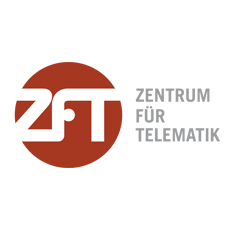Consortium
Project Lead
Deutsche Telekom
Deutsche Telekom operates networks for business and residential customers inside and outside Europe and strives to provide its customers with the high-quality communications options they need wherever and whenever possible. Network elements in satellites and flying platforms have complementary properties to existing terrestrial mobile communications networks. By combining terrestrial and non-terrestrial network elements, the aim is to further improve the quality and range of the existing service offerings and also enable new applications. To this end, insights gained in 6G-TakeOff will be incorporated into the design of the future network architecture and the design of future products for business and residential customers.
Project Partners
 Airbus
Airbus
Airbus Defence and Space is a world-leading satellite manufacturer with extensive expertise in satellite communications systems. Airbus is currently developing innovative concepts to increase the integration of satellite connectivity into terrestrial communication solutions for a wide range of applications. This is being done in consideration of the further development of the 5G standard by 3GPP, which for the first time provides for non-terrestrial, i.e., satellite or HAPS-based networks. A special focus is on (auto-)mobile applications. The results of the 6G-TakeOff project will allow Airbus to design suitable satellite systems that enable seamless and cost-efficient integration of satellite communications into the global telecommunications ecosystem for the user.  Creonic
Creonic
Creonic GmbH from Kaiserslautern is an ISO 9001:2015 certified provider of ready-for-use IP cores for several algorithms of communications such as forward error correction (LDPC, Turbo, Polar), modulation, and synchronization. Creonic implements FPGA and ASIC designs for wireless and wired communication. This includes a variety of satellite communication standards, such as DVB-S2X, DVB-RCS2, 5G, 4G, CCSDS, DOCSIS 3.1, WiFi, WiGig, and UWB. Chip designs for optical communication are also available, enabling inter satellite link (ISL) communication. As the richest in this field, the IP-Core product portfolio is used by dozens of customers worldwide in satellite modems and satellites. The products comply with the highest requirements with respect to quality and performance. With Creonic’s chip designs, companies from start-ups to global corporations can realize their NewSpace goals.  DEUTSCHES ZENTRUM FÜR LUFT- UND RAUMFAHRT (DLR) e.V.
DEUTSCHES ZENTRUM FÜR LUFT- UND RAUMFAHRT (DLR) e.V.
DLR is the Federal Republic of Germany’s research center for aeronautics and space. We conduct research and development in aeronautics, space, energy and transport, security and digital transformation. The German Space Agency at DLR is responsible for planning and implementing German space activities on behalf of the Federal Government. Two DLR project management agencies oversee funding programs and support knowledge transfer.
The DLR Institute of Communications and Navigation is dedicated to mission-oriented research in selected areas of communications and navigation. Its work ranges from theoretical fundamentals to the demonstration of new procedures and systems in real-world environments and is embedded in DLR’s space, aeronautics, transport, and security and digital transformation programs.
In the Project 6G-TakeOff the DLR Institute of Communications and Navigation will address the development of technologies for Multiaccess Edge Computing, Software-Defined Radio based Internet of Things (SDR/IoT) and reliable Data Multicast with on-the-fly communication payloads in unified 3D communication networks of 6G. In particular, these technologies are being developed with respect to 6G communications over satellite (LEO, GEO) and over High Altitude Platforms (HAPs). 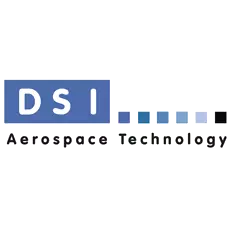 DSI AEROSPACE TECHNOLOGIE GmbH
DSI AEROSPACE TECHNOLOGIE GmbH
DSI is a medium-sized company situated in Bremen, Germany, which develops special electronics for the aerospace industry.
DSI specializes in the development of digital signal processing systems that achieve significant resource savings in terms of energy consumption, mass, and volume. Highly integrated approaches enable fast data processing while maintaining high reliability, e.g., by using the latest qualified FPGAs and ASICs.
DSI offers highly reliable systems for harsh environments such as:
- cryptographic systems,
- on-board computers,
- control computers,
- mass storage devices,
- special hardware for data and signal processing (CCSDS formatting, compression, earth observation data processing,…)
- communication systems,
- special ground and test systems
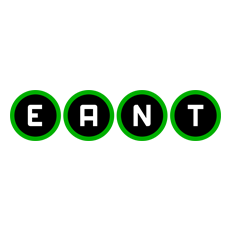 EANT
EANT
EANT GmbH develops solutions for the communication sector. It has more than 20 years of experience in the development of satellite communication terminals for “On The Move” applications, especially for demanding environmental conditions such as on the high seas. In recent years, the field has expanded to include terrestrial radio and customized solutions for fiber optic communications. In-house mechanical and electronic development can be completely mapped. Analog and digital signal processing, as well as complex simulations of high-frequency components and the production of customized measurement technology, are part of the company’s expertise. The developments are carried out up to a functional prototype, but are also accompanied until they are ready for the market. Additional wide-ranging know-how has been acquired through many years of cooperation with various partners from the industry and research institutes.  FRAUNHOFER FOKUS
FRAUNHOFER FOKUS
Fraunhofer FOKUS conducts research on digital transformation and its impact on economics, technology, and our society. Since 1988, FOKUS has been supporting commercial enterprises and public administrations in the shaping and implementation of digital transformation. For this purpose, Fraunhofer FOKUS offers research services ranging from requirements analysis to consulting, feasibility studies, technology development right up to prototypes and pilots in the business segments Digital Public Services, Future Applications and Media, Quality Engineering, Smart Mobility, Software-based Networks, Networked Security, Visual Computing und Analytics. With about 460 employees in Berlin and an annual budget of 34.5 million euros, Fraunhofer FOKUS is one of the largest ICT institutes of the Fraunhofer Society. Around 80 percent of its budget is generated through projects from industry and the public domain. 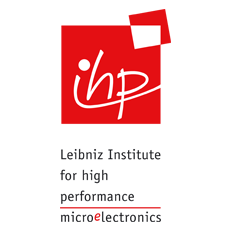 LEIBNIZ INSTITUTE FOR HIGH PERFORMANCE MICROELECTRONICS
LEIBNIZ INSTITUTE FOR HIGH PERFORMANCE MICROELECTRONICS
The IHP is one of the world-leading research institutions in the field of SiGe BiCMOS electronics, with around 350 professionals involved in the research in semiconductor technology, materials science, high-frequency circuits and system solutions. The research is focused on socially relevant topics in the fields of communication, mobility, health, environment, industry, agriculture, space and security. As a member institute of the Leibniz Society, the core funding comes from the German Federal Government and the State Government of Brandenburg. In addition, the institute acquires over 20 million euro of third-party funding annually.
Based on the internationally recognized qualified BiCMOS technology, the IHP has extensive know-how and a portfolio of IP blocks in the areas of wireless communication, localization, sensors, and rad-hard solutions. The IHP has participated in numerous EU-funded space projects (e.g., VHISSI, SEPHY, MORAL), and has coordinated several of them. In addition, the IHP is actively involved in the development of European 5G and 6G technology as part of numerous large EU projects (e.g., 5G-Victori, 5G-Clarity, 5G-XHaul, 5G-Picture), several of which were coordinated by IHP. IHP is also participating in two 6G-related BMBF projects (Open6Ghub and 6G-RIC).
In the 6G-TakeOff project, the IHP focuses on the development of backhaul baseband processor for application in satellites. The baseband processor will be integrated into an FPGA platform as a prototype, and tested in the laboratory.
From the research point of view, the main focus will be on the reliable operation of the baseband processor under harsh conditions in space. In order to achieve this goal, it is necessary to study the methods of protecting critical hardware blocks of the processor against the radiation-induced soft errors, which are common in space. 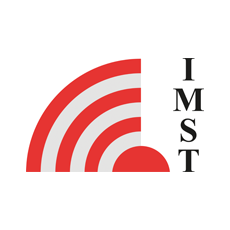 IMST
IMST
IMST GmbH is involved in the development of radio modules, high-frequency circuits and components, antennas and simulation software. As a research and development house with approx. 130 engineers, IMST has extensive know-how in innovative technologies and excellent contacts in a wide range of industries such as ICT, automotive, aerospace, and medical technology. The three main business pillars are contract development, certification services, RF measurement technology and consulting, and the sale and marketing of proprietary software and hardware products.  JOHN DEERE
JOHN DEERE
John Deere is the brand of Deere & Company, the world’s leading manufacturer of agricultural, forestry, construction, and turf and grounds care equipment, headquartered in the USA. Deere & Company employs approximately 75,500 people worldwide (2021), has 80 plants, development and parts centers in 20 countries, and sells its products in more than 160 countries. As Germany’s largest agricultural equipment manufacturer and a producer of road construction machinery, John Deere GmbH & Co. KG employs around 11,000 people at eleven locations in Germany.
The Intelligent Solutions Group at the European Technology Innovation Center (ETIC) investigates and develops future trends and technologies in the field of mobile agricultural and construction machinery in close cooperation with various research institutions. At the ETIC development center, engineers, IT, and marketing specialists are working on future technologies and “intelligent solutions” for precision agriculture and road construction.
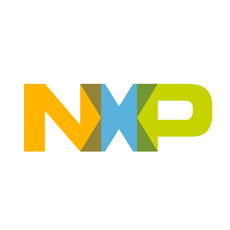 NXP
NXP
NXP Semiconductors N.V. (NASDAQ: NXPI) enables a smarter, safer and more sustainable world through innovation. As the world leader in secure connectivity solutions for embedded applications, NXP is pushing boundaries in the automotive, industrial & IoT, mobile, and communication infrastructure markets.  OTARIS
OTARIS
OTARIS Interactive Services GmbH is an IT service provider specializing in secure software development, IT security, quality management and testing. As an independent consulting company, OTARIS supports its customers in optimizing secure product development processes as well as in testing and evaluating mobile services and IT infrastructures. In addition, OTARIS performs performance and quality measurements of mobile networks and services and tests IoT devices, communication protocols and software systems for quality, security (incl. penetration tests), and data protection compliance in the OTARIS test lab. As part of the project, OTARIS supports the development of security architectures, the execution of threat analyses and the implementation of defense-in-depth concepts and test strategies.  ROHDE & SCHWARZ
ROHDE & SCHWARZ
The Rohde & Schwarz technology group is among the trailblazers when it comes to paving the way for a safer and connected world with its leading solutions in test & measurement, technology systems, and networks & cybersecurity. Founded nearly 90 years ago, the group is a reliable partner for industry and government customers around the globe. On June 30, 2022, Rohde & Schwarz had around 13,000 employees worldwide. The independent group achieved a net revenue of EUR 2.53 billion in the 2021/2022 fiscal year (July to June). The company is headquartered in Munich, Germany.
The Rohde & Schwarz technology group develops, produces and sells a wide range of electronic capital goods. With its entire product portfolio, the company makes a valuable contribution to a secure and networked world. In the markets of test & measurement, secure communications, networks & cybersecurity, and broadcast & media, customers around the world rely on Rohde & Schwarz and its technologically leading solutions. In addition to its established business areas, the Group invests in future technologies such as artificial intelligence, Industrial Internet of Things (IIoT), 6G, cloud and quantum technology.

RPTU
The Chair of Wireless Communications and Navigation at the University of Kaiserslautern-Landau (RPTU), headed by Prof. Hans Schotten, who is also head of the Intelligent Networks research area at DFKI, has extensive and long-standing experience in the working areas of 5G and 6G mobile communications, industrial radio and network security. The chair is involved in numerous European 5G projects, the EU 6G lighthouse project Hexa-X, four 6G industrial projects and the 6G research hub Open6GHub. In the 6G Take-Off project, the partner RPTU will in particular contribute its many years of experience in the areas of network architectures, highly reliable radio network access solutions, drone applications, campus networks, demonstrator development, and artificial intelligence. SMART MOBILE LABS AG
SMART MOBILE LABS AG
Smart Mobile Labs (SML) is the world’s leading provider of many-to-many video transmission in real‑time. With its core technology Edge Video Orchestrator (EVO), it brings experience in secure, dynamic and high-quality distribution of video, audio and data streams over mobile radio with low latency, also with multi-access edge computing (MEC) support. A further expertise of SML is the planning and realization of 5G campus networks – also in mobile execution. SML is active in research as well as on the commercial side. Many commercial 5G networks in research and development, but also in industry have already been successfully realized.
 TELEFÓNICA
TELEFÓNICA
Telefónica Deutschland is one of the leading integrated telecommunications providers in Germany, with over 44 million mobile lines and 2.4 million broadband lines. We offer mobile and fixed-network services for consumers and business customers, as well as innovative digital solutions based on our infrastructure. Hardly any of the advances of the digital age would be possible without mobile communications: The smart networking of cities, intelligent energy systems, or networked factories need high-performance networks. And the great social challenge of our time, the climate change, can only be mastered through digital networking. That is why the company has a leading role to play in the digital transformation. In 6G-TakeOff, we are helping to enable innovations and the convergence of information and communications technologies of future 6G technologies, taking into account industry-specific requirements, as well as enabling technology transfers through demonstrators and testing.
 UNIVERSITY OF BREMEN
UNIVERSITY OF BREMEN
The University of Bremen is a medium-sized German university with around 20,000 students. Bremen offers a wide range of subjects and degrees for its committed and talented students: more than 100 master’s and bachelor’s degrees, as well as the state law exam. Moreover, with research-based learning, the university has reinterpreted project-based courses, a defining feature originating from when the University of Bremen was founded. As part of the European university network YUFE–Young Universities for the Future of Europe, it is developing a new model for European higher education together with nine other universities. The Department of Communications Engineering has long-time expertise in conducting research in the areas wireless transmission systems, algorithms, and signal processing techniques. By the participation in DFG programs, relevant EU (Fantastic-5G, METIS, iJOIN) and BMBF (HiFlecs, BZKI, TACNET 4.0, IRLG, FunKI, MOMENTUM, Open6GHub, 6G-Plattform, 6G-ANNA) funded research projects, and industry projects the gained results in basic research are exploited for the development and standardization of mobile communication systems and space communication systems. In the 6G-TakeOff project, the University of Bremen will explore innovative concepts for 6th generation 3D communication networks. For this purpose, the dynamic mapping of RAN functionality to network components will be analyzed, information flows between 3D network components will be optimized, and distributed receiver concepts will be explored. Starting from theoretical concept development, appropriate methods are explored taking into account 6G specific system parameters and scenarios as well as the ongoing international discussion in the various committees. The department contributes its expertise in the areas of baseband signal and information processing, machine learning, and system design for information flow control in 3D network architectures.  ZF
ZF
ZF is a globally active technology group and supplies systems for mobility in passenger cars, commercial vehicles, and industrial technology.
We make vehicles see, think and act: In the four technology fields of Vehicle Motion Control, Integrated Safety, Automated Driving, and Electromobility, ZF offers comprehensive product and software solutions for established vehicle manufacturers as well as for emerging providers of transportation and mobility services. In doing so, we electrify vehicles in a wide range of categories and contribute with our products to reducing emissions, protecting the climate, and making mobility safer.
With our focus on vehicles of all kinds, our role in the 6G-TakeOff is to present the needs from this sector and actively participate in their realization.


